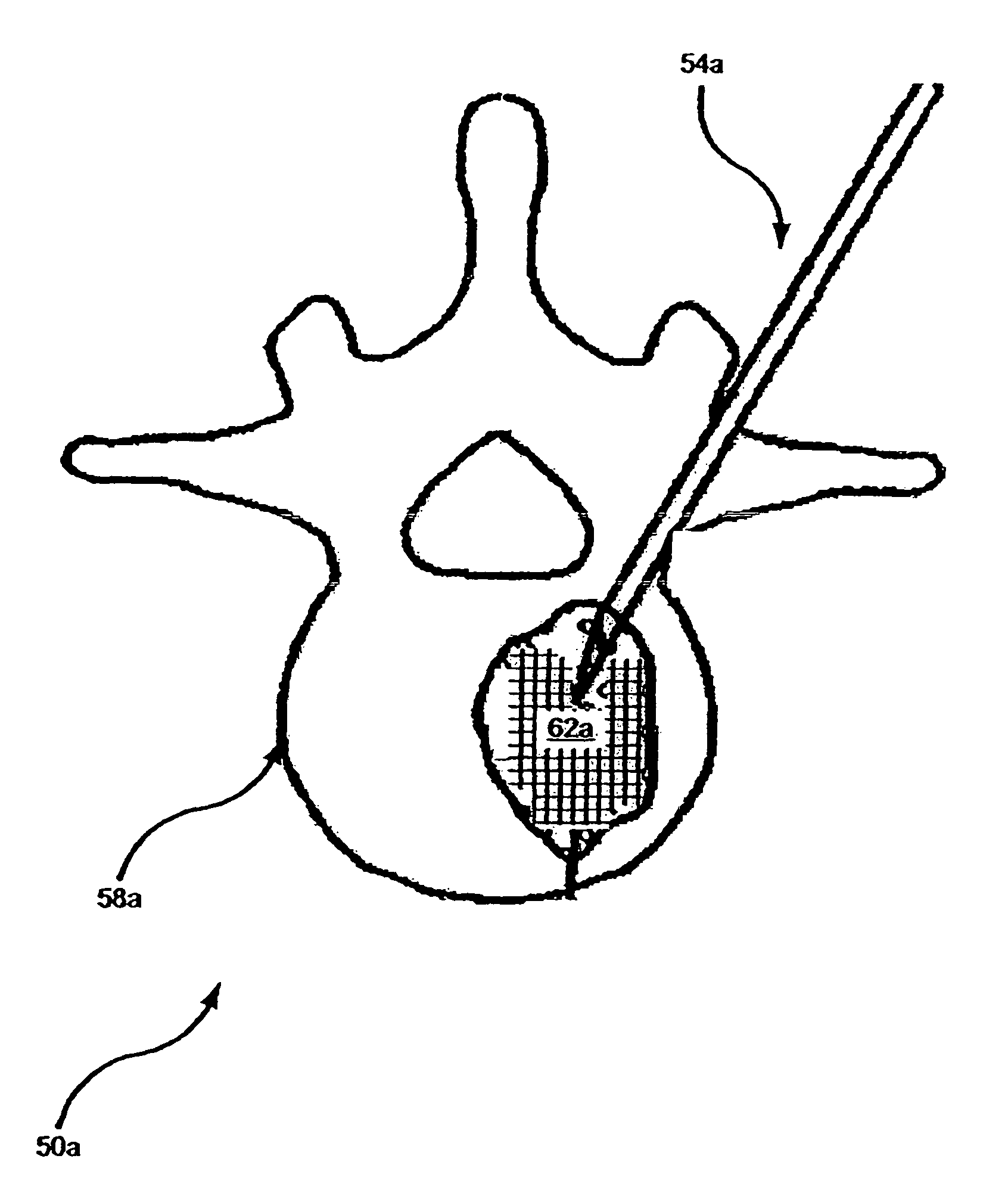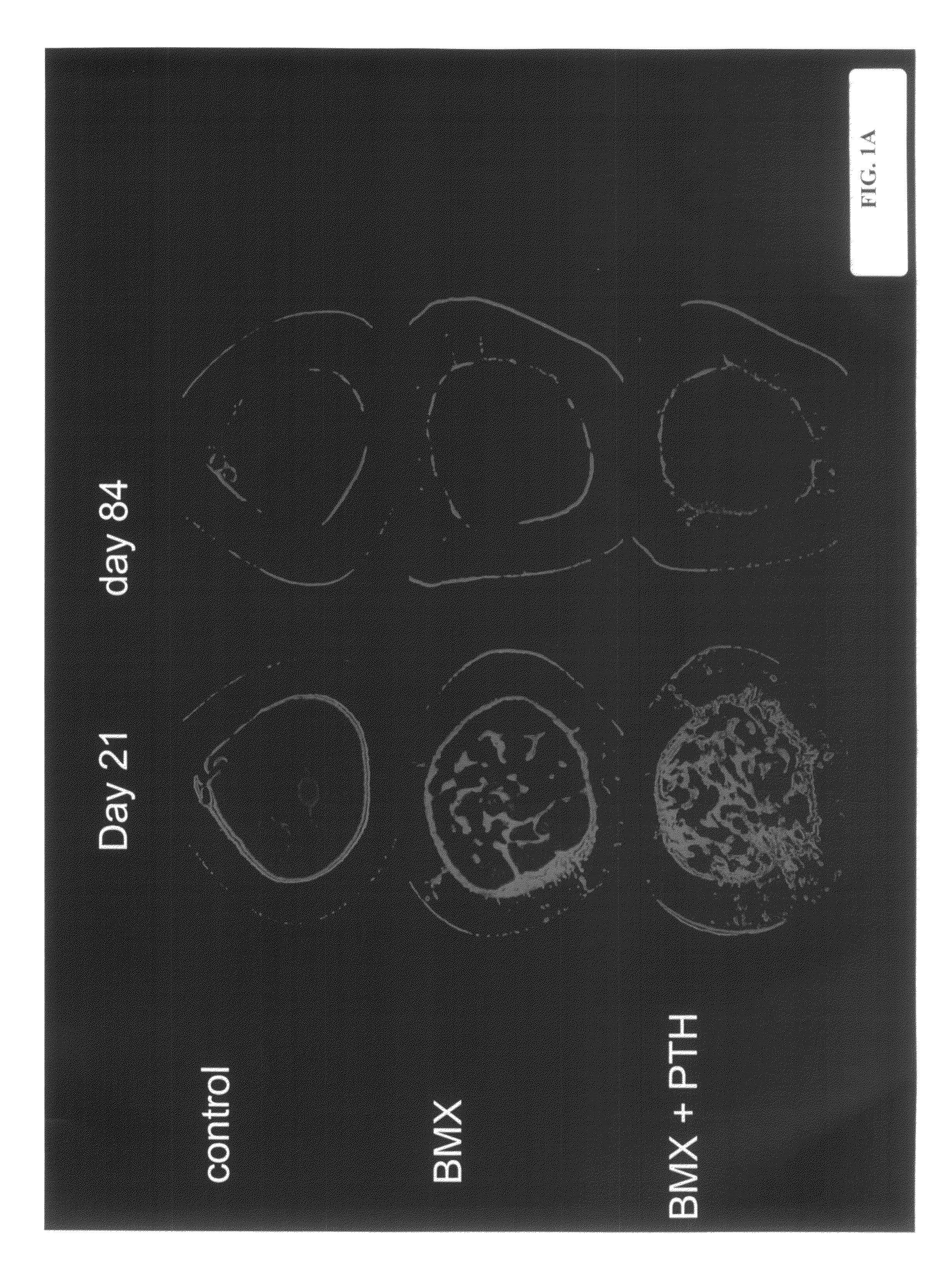Methods and compositions for fostering and preserving bone growth
a technology of applied in the field of methods and compositions for fostering and preserving bone growth, can solve the problems of long treatment regimens with accompanying patient compliance problems, excessive bone resorption rate, and excessive bone formation rate, so as to augment the new bone growth obtained, the effect of rapid bone resorption and targeted bone growth
- Summary
- Abstract
- Description
- Claims
- Application Information
AI Technical Summary
Benefits of technology
Problems solved by technology
Method used
Image
Examples
Embodiment Construction
[0035]As has been pointed out above in the discussion concerning the background of the present invention, it has been determined by the inventors that newly formed bone produced by the action of bone augmentation agent(s), such as a bone anabolic agent (e.g., parathyroid hormone), in areas lacking cancellous bone may not be permanent in nature and such bone may, in fact, become at least partially resorbed if constant anabolic therapy (alone) is applied. To address this issue, the invention describes two distinct approaches for preserving new bone in marrow cavities lacking such cancellous bone ‘scaffolding’, i.e., the cycling of a potent antiresorptive agent, such as a bisphosphonate or the inclusion of one or more biocompatible material such as (but not limited to) a biocompatible bone cement to serve as such scaffolding for supporting the new bone growth and fostering its maintenance.
[0036]For purposes of convenience in explaining the invention, the materials for forming a scaffol...
PUM
| Property | Measurement | Unit |
|---|---|---|
| concentration | aaaaa | aaaaa |
| concentration | aaaaa | aaaaa |
| weight | aaaaa | aaaaa |
Abstract
Description
Claims
Application Information
 Login to View More
Login to View More - R&D
- Intellectual Property
- Life Sciences
- Materials
- Tech Scout
- Unparalleled Data Quality
- Higher Quality Content
- 60% Fewer Hallucinations
Browse by: Latest US Patents, China's latest patents, Technical Efficacy Thesaurus, Application Domain, Technology Topic, Popular Technical Reports.
© 2025 PatSnap. All rights reserved.Legal|Privacy policy|Modern Slavery Act Transparency Statement|Sitemap|About US| Contact US: help@patsnap.com



